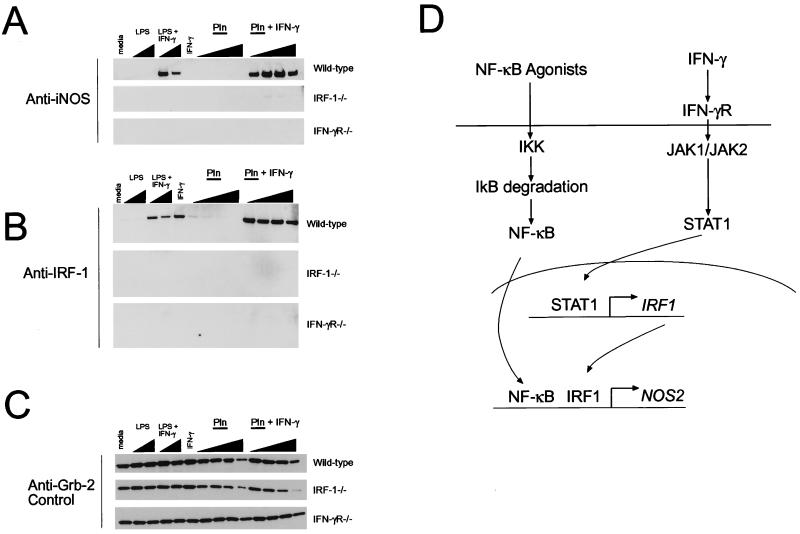FIG. 4.
Stimulation of iNOS production by Pln is dependent on the IFN-γ signaling pathway. Peritoneally derived inflammatory macrophages were isolated from wild-type, IRF-1−/−, or IFN-γR−/− mice as described in Materials and Methods. Wild-type cells derived from C57BL/6 or 129/BL6 mice responded in similar fashions to the stimulants indicated. Wild-type results shown are from cells derived from C57BL/6 mice. Cells were stimulated with the different agents shown at the top of each panel for 18 h, and cell lysates were prepared. iNOS (A) and IRF-1 (B) were detected by immunoblotting. The adapter protein Grb-2, whose levels do not fluctuate in macrophages (25a), was used as a loading control and was detected by immunoblotting (C). Panel D shows a simplified diagram of some of the key components required for iNOS expression. Note that in the highest concentrations of Pln, there is less total protein loaded, which reflects Pln-induced toxicity to the cells. The molecular masses of the proteins are as follows: iNOS, ∼130 kDa; IRF-1, ∼43 kDa; and Grb-2, ∼26 kDa. Final concentrations of agonists used were as follows: LPS, 50 and 200 ng/ml; IFN-γ, 2 ng/ml in all cases; and recombinant Pln, 1.25, 2.5, 5, and 12.5 μg/ml. Data are representative of two independent experiments.

